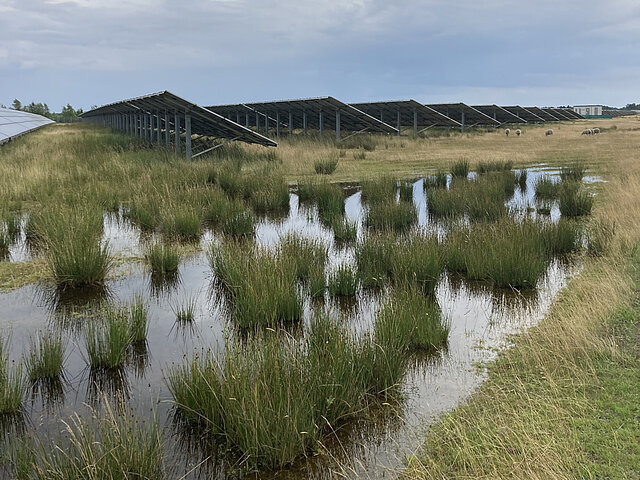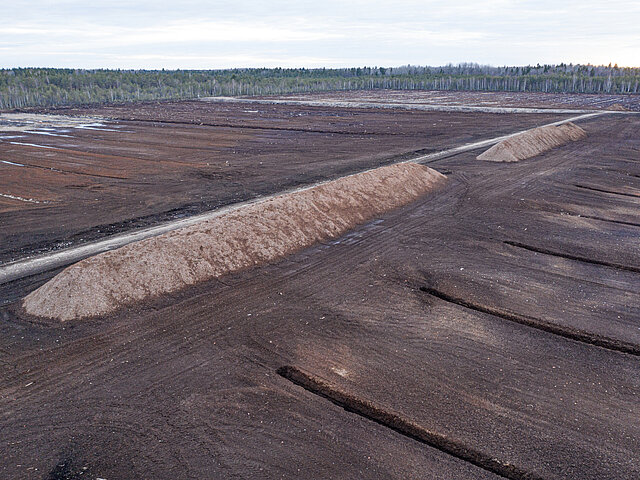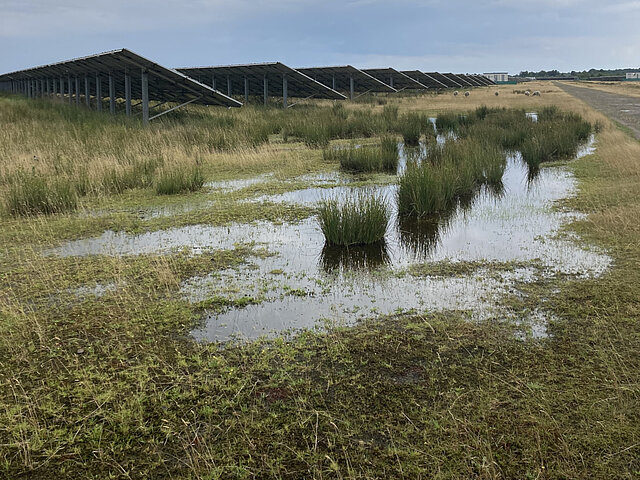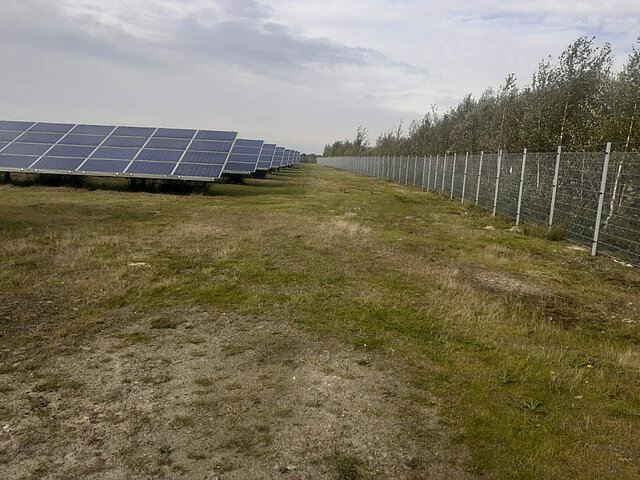
How a dredged bog is turned into a new biotope

A peat-covered area is not a pretty sight. Nothing reminds you of the former bog, where peat was dug up for horticulture. Without plants and smoothed out, the area looks as if a parking lot is about to be tarmacked. Such areas are called conversion areas. Areas that used to be open-cast mines (including peat extraction) or military sites are considered particularly suitable for the installation of ground-mounted photovoltaic systems. There are usually few objections to this, as no land is being converted that serves other important purposes, such as agriculture or nature conservation.
However, if Germany wants to achieve its expansion targets, it will not be enough to install solar cells on roofs, along highways and on converted land. Other open spaces will have to be built on and this raises concerns about additional competition for space. Do we have enough space for all these plans? And what happens to areas covered with photovoltaic systems?

PV power plant Georgsdorf: Bog indicator plants have returned
It's worth taking a look at a former conversion area, specifically in Georgsdorf in Lower Saxony. In 2011, a ground-mounted PV system planned and managed by JUWI went into operation on a peat-covered moon-like landscape, 60 hectares in size with an output of 25 MW. “There was nothing left,” remembers Frank-Michael Gräfe, landscape architect at JUWI and responsible for the so-called compensatory measures that have to be taken when there is interference with nature. The authorities didn't specify much: a 6,500 meter long hedge was built around the facility as a privacy screen. Neither fertilizers nor pesticides may be used. 400 hornless moorland sheep ensure that the area between the modules does not become overgrown. The fence and hedge that surround the power plant is passable for small mammals.

It is all the more astonishing how the area now presents itself: although drainage is still being carried out, some parts have become waterlogged again, and there are even occasionally large puddles under the modules. People rarely roam the area and there are no dogs on the premise so birds can breed in peace. The shepherd has already spotted curlews, snipes and ringed plovers, reports Gräfe. Due to the lack of pesticides, combined with the presence of wet areas, they find plenty of food. This has ensured the return of numerous plants and a variety of insects. "Even indicator species for moors such as cotton grass, moor willows and moor birches have settled," says the landscape architect.
Technical planning supports biotope development
However, it was not only protection from human and animal predators and the avoidance of pesticides that helped biodiversity. Technical planning also played an important role. "The first ground-mounted systems in particular were planned with a lot of extra space", Gräfe remembers. "We maintained large distances between the rows and almost overcompensated a little.” The advantage: rainwater can run off and seep away between the modules and the soil receives sufficient sunlight. "Experience shows that nature develops well between the modules if certain rules are adhered to," says Gräfe. Rules such as those laid down by the German Association of the New Energy Economy, which JUWI also follows.



